
Walther’s highly acclaimed pistols and rifles chambered in .22 Long Rifle have spent a lot of time on the Olympic stage, but recent years have seen the company expand into actionpistol competition. That began in 2018 with the PPQ Match, to the Q5 Match Steel Frame in 2019, and in 2024 with the introduction of the PDP Full-Size Match Polymer and the PDP Match Steel Frame.
The recoil-reducing weight of the PDP Match Steel Frame should appeal to many competitors.
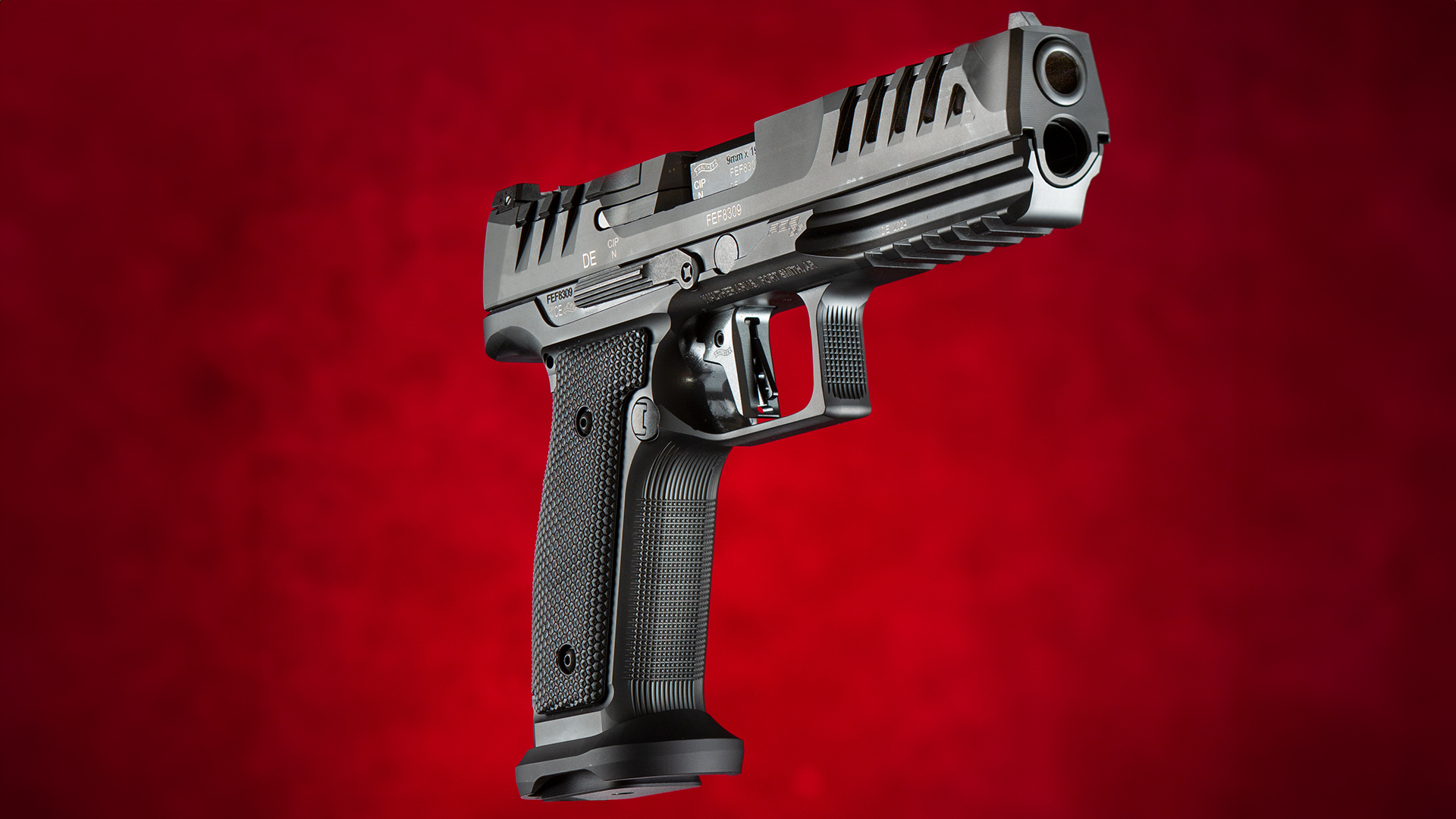
The Gun
Chambered for 9 mm Luger, the striker-fired PDP Match Steel Frame (MSRP: $1,899) is built on a machined steel frame and slide. Empty weight is 41 ounces. Overall length is 8.37 inches with a height of 5¾ inches. Generous cutouts on the forward slide and rear slide serrations allow for easy manipulation. The five-inch-long stainless steel barrel has a 1:9-inch twist, which will properly stabilize the 147-, 160- and 165-grain loads a number of competitors favor, along with the lighter slugs. Operating controls include an oversize magazine release on the left that is reversible. The slide release is an extended ambidextrous one that’s easy to hit with either hand. Removable and replaceable grip panels are a wrap-around design with an aggressive stippling pattern that’s complemented by a checkered front strap. An aluminum magazine well is installed, but is easily removed via a roll pin for those divisions that don’t allow one. As for the trigger, it’s Walther’s Dynamic Performance Trigger sporting a trigger bar safety.
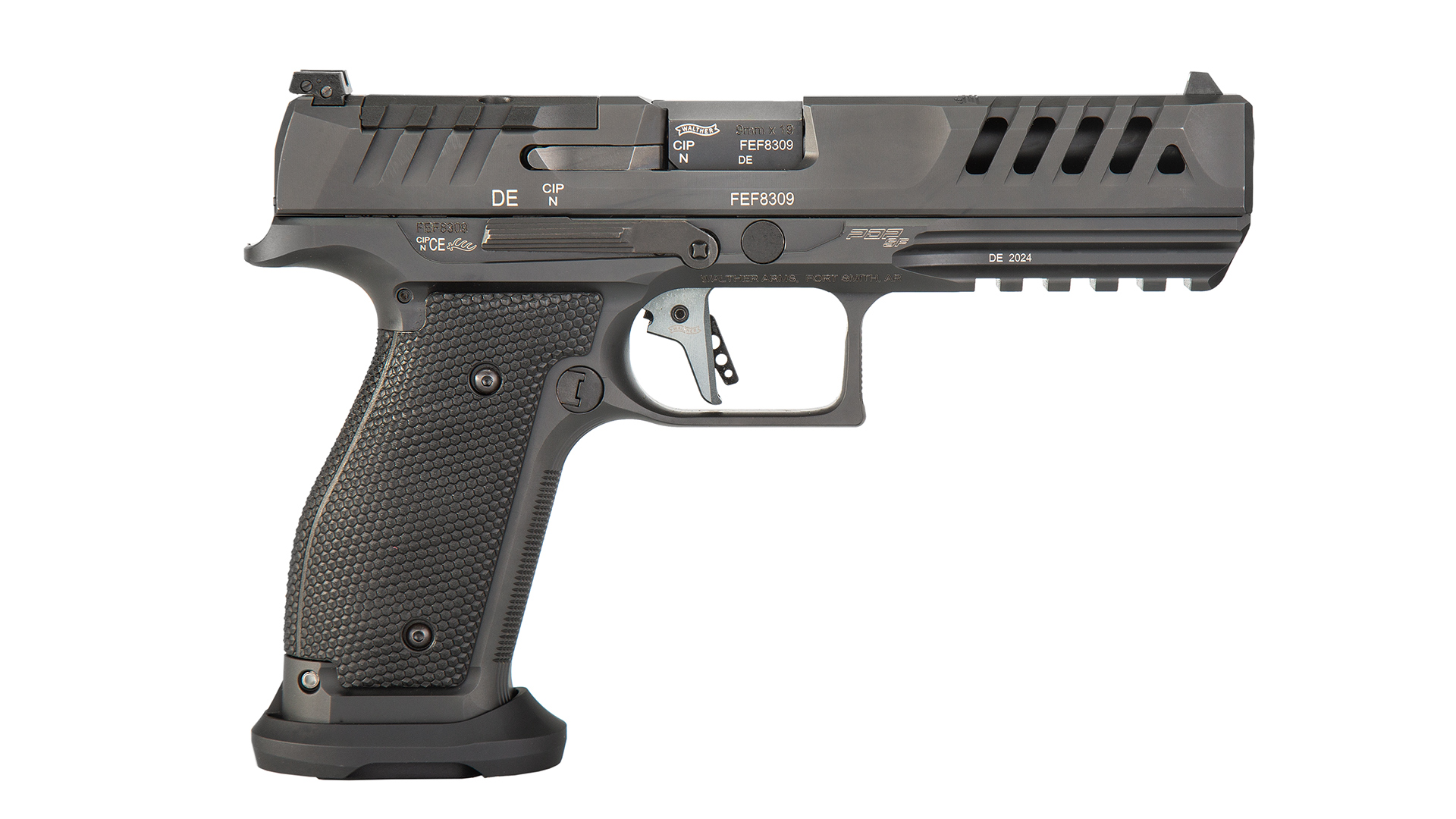
Iron sights are a low-riding, three-white-dot model, with the rear adjustable for windage and elevation, along with a simple provision for installing a reflex sight. Optics mounting requires nothing more than removing the cover plate forward of the rear sight, installing the appropriate sight mounting plate and then the reflex sight. Plates are currently available for the Trijicon RMR (02), Leupold Delta Pro (04), and Vortex Viper/Venom and Burris Fastfire 3/Doctor III (06). Walther notes that additional plates are on the way.
The PDP Match Steel Frame ships in a foam-lined, cut-out, hard plastic case with one 20-round and two 18-round magazines, cable lock, instruction manual, one mounting plate, and sight adjustment and sight cover plate tools.
On The Range
Out of the box the gun was dry, so my first step was to field strip and lube it. That process was quick and simple. Clear the gun, lock the slide back with the slide lock lever and rotate the left-side take down lever fully upwards. Then pull the slide slightly to the rear to release the slide stop and let the slide go to its forward position. Pull the trigger and remove the slide forward from the frame to allow removal of the barrel and captured recoil spring/ guide rod assembly. A spray of Hornady One Shot cleaner and lube went into the trigger assembly, with some FP-10 Elite on the frame rails and forward barrel exterior. With the slide installed back into position on the frame and the take down lever turned down, I was done.
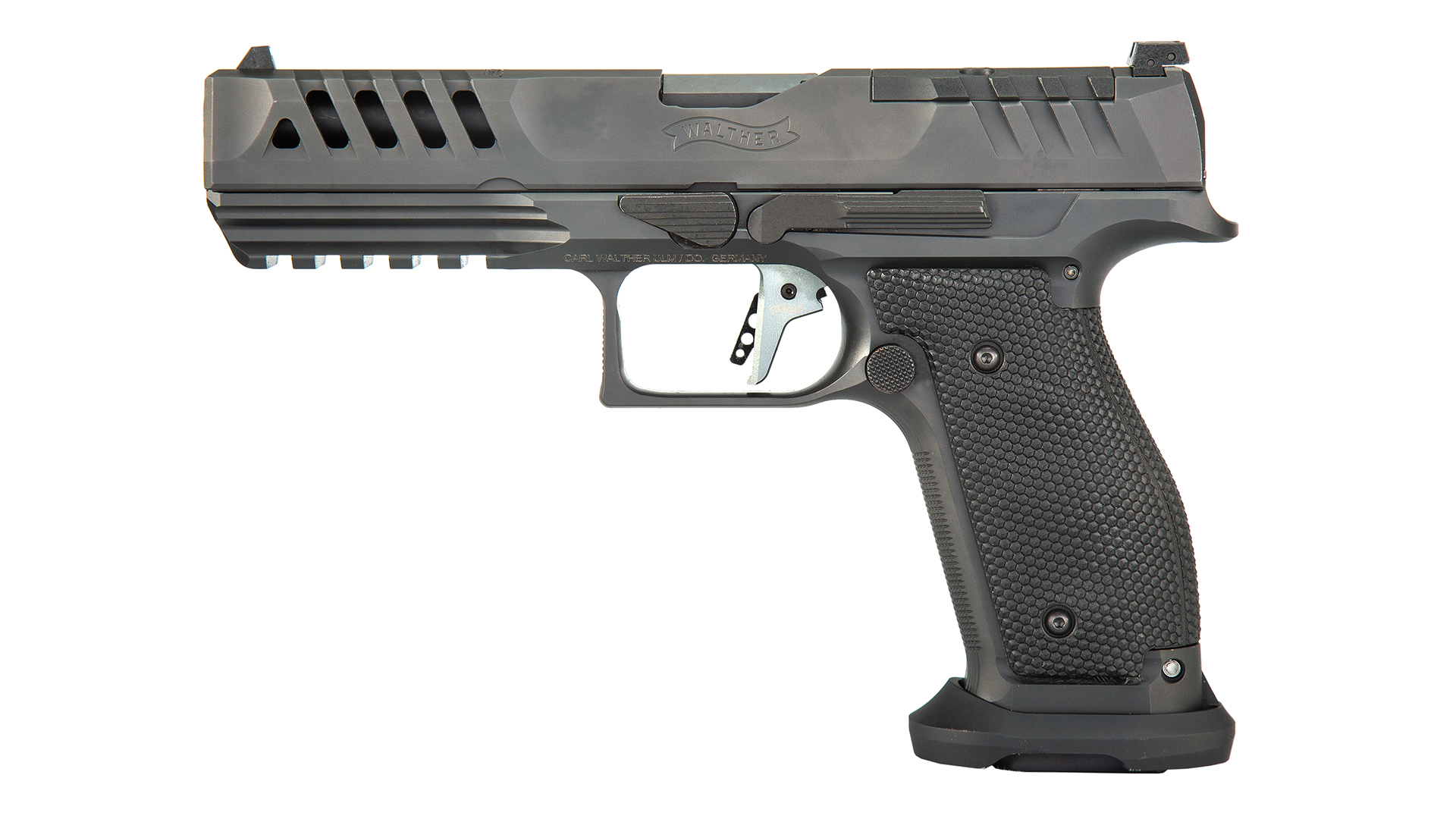
Firing rounds through the gun to start the break-in process was next on the agenda. While the iron sights didn’t figure into my overall plans, I decided to start with them. Grabbing some partial boxes of mixed 115- and 124-grain factory loads, I headed to my backyard range.
All three magazines loaded easily to their capacity with the required “wink” in the top round (the slight amount of give in the top round that lets the magazine properly seat when slammed into the gun with a slide forward reload). The three magazines were rotated throughout the subsequent tests with nary a problem.
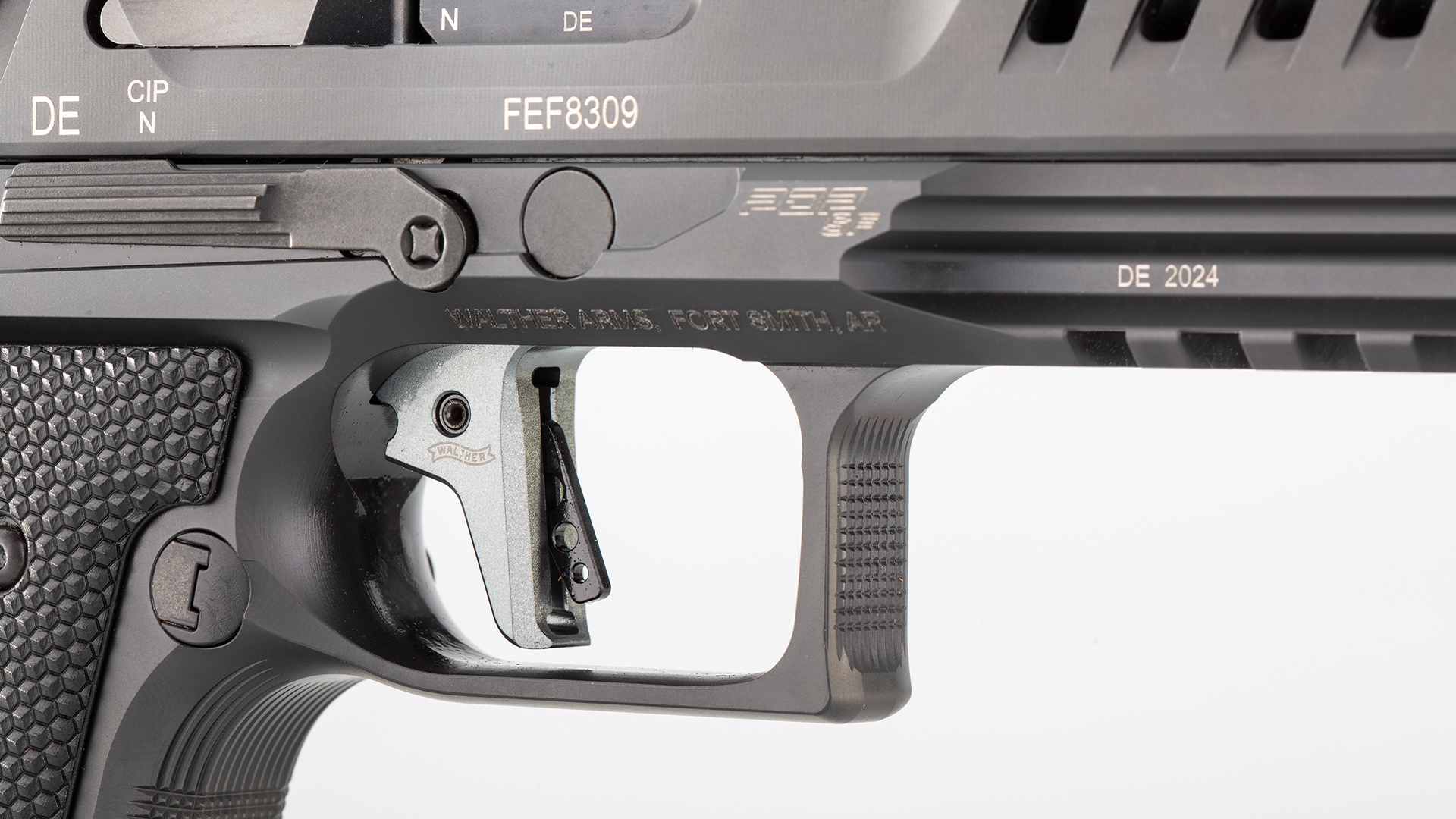
Several IDPA targets were set up 10 feet apart, and I swung through them off hand from 15 to 25 yards, just to get rounds from all three magazines through the gun. The white three-dot sights presented a crisp sight picture, although they were printing about six inches low. I didn’t see any point in adjusting them since they weren’t going to play a further role.
After shooting three fully loaded magazines, I was impressed with the PDP Match Steel Frame’s handling. The high beavertail grip, combined with steel-frame weight promoted a smooth swing, and the sights stayed on the targets with greatly reduced muzzle flip. Recoil was definitely on the soft side. The grip panels were a good fit for my average-sized hands and provided a proper trigger finger position and positive non-slip hold, even during Florida’s mid-summer heat. There were no malfunctions of any kind.
With three full magazines through the gun, I decided to measure the trigger pull on my digital scale. It was four pounds, 12 ounces. The trigger travel was short, with a positive break point and a fast reset.
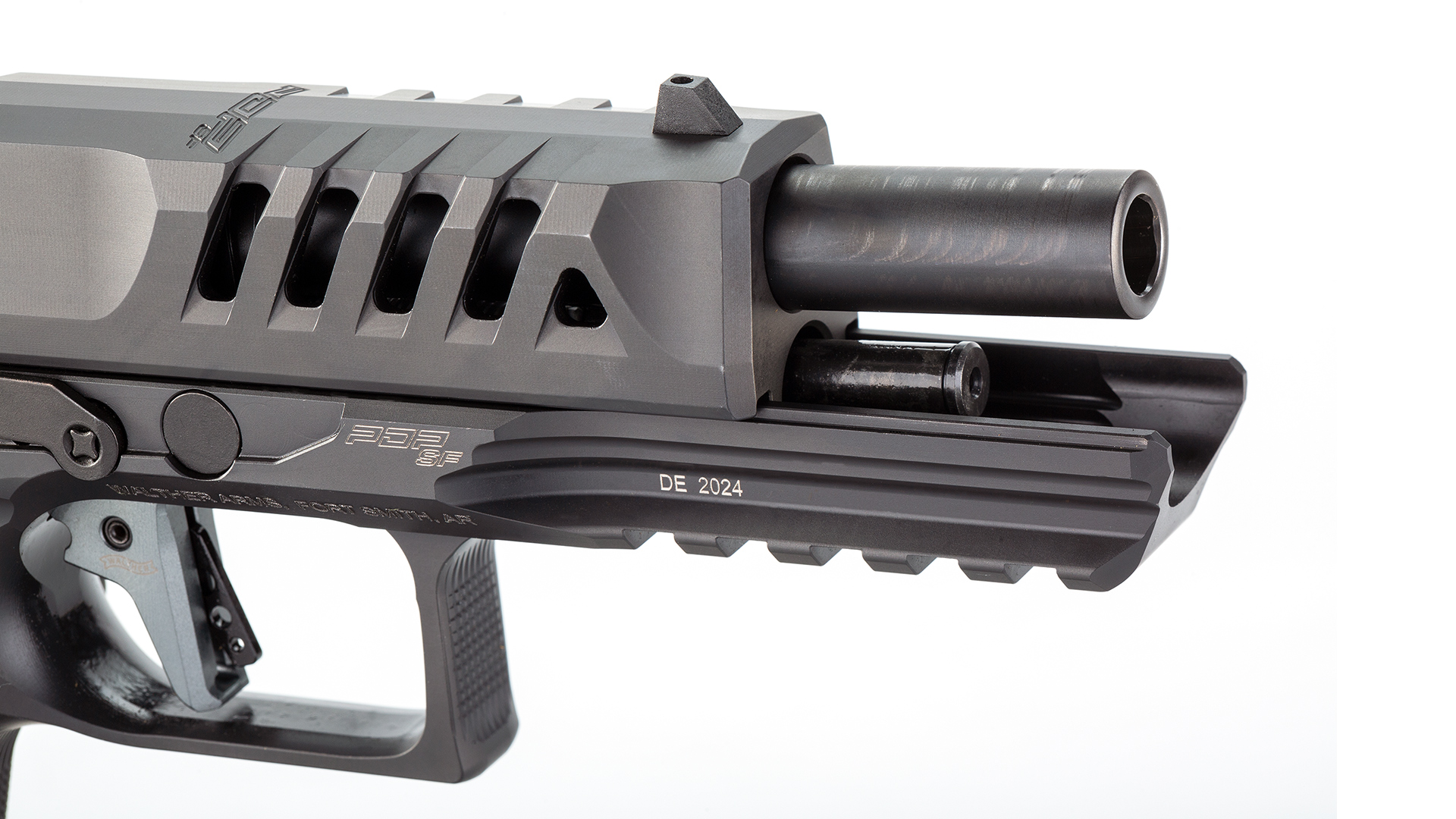
Mounting the optic was simple. The included optic plate was the 02 RMR thread pattern and the only appropriate sight available was an original RMR. Using the supplied T10 wrench, the cover was removed, the optics plate set in and the top cover screws used to secure it. Using the RMR mounting screws it slipped right into place. It was a 60-second operation.
For accuracy testing, I wanted to use a variety of bullet weights and decided on Federal Syntech 150-grain and Remington 147-grain jacketed sub-sonic for heavyweights. Federal’s Syntech 130-grain PCC load and Lapua’s 123-grain load served as mid-weights, with Remington 115-grain ammo as the lighter bullet load. The accompanying accuracy table will show the PDP Match Steel Frame is no slouch when it comes to printing tight groups. It’s probably the most accurate 9 mm Luger semi-automatic I’ve yet tested. The RMR has a small window, and during previous service on my Carry Optics match pistol I often lost the dot. That didn’t happen with the PDP Match Steel Frame. The dot would bounce up on firing, but it bounced right back into place before the trigger even reset. With the Federal Syntech 150-grain and Remington 147-grain loads, there were some rounds where I never lost the dot.
The solid steel-frame soaked up the recoil remarkably well.
Accuracy Table
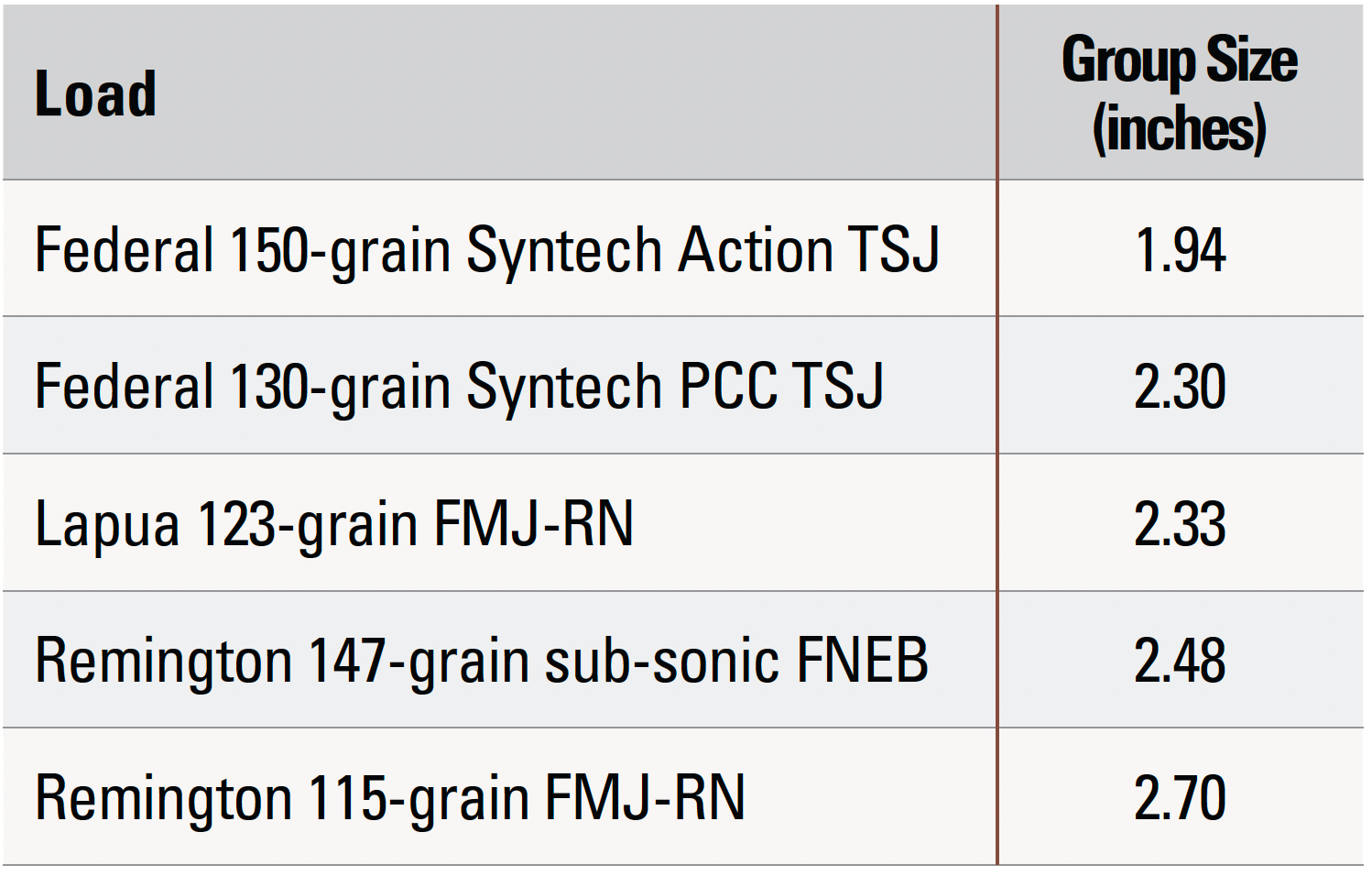
During my initial three-magazine session, I did notice that ejection was far less vigorous than expected. Factory 115-grain and 124-grain loads running in the 135 to 140 Power Factor range were only kicking out about three feet. That was again displayed during the bench tests. I measured those rounds at 3.3 feet. The 150-grain Federal Syntech and 147-grain Remington were even less enthusiastic. Some just trickled down my wrist, while the more energetic ones bounced off my ball cap.
I was curious, so I grabbed some of my handloaded match rounds: a 116 Power Factor coated lead Steel Challenge load and a coated lead 127 Power Factor IDPA load. None of them ejected—all were stovepipe jams. But they shot accurately and the recoil felt like my .22 Long Rifle match pistol. (Editor’s note: The PDP Match Steel Frame manual specifies not to use handloaded ammunition.)
I have no way to measure the recoil spring weight, but it certainly feels like it’s in the upper “teens.” Given the PDP’s duty gun roots, I suspect that’s to handle hot duty loads, and not the reduced Power Factor loads that competitors prefer. One company, ZR Tactical Solutions, offers captured drop-in recoil guide rod assemblies for the PDP in 13-, 15- and 17-pound weights. That would allow shooters to tune the gun to their load instead of having to tune the load to the gun. (Editor’s note: I spoke with Walther about the author’s issue. “They come pretty dry out of the box, and the gun needs to be pretty wet, since it is a steel frame. Once lubed properly, the gun will run flawlessly. And with the handloaded 116 Power Factor rounds, you need to run a 13- to 15-pound recoil spring in it.”)
From the box, the gun makes the weight and mechanical feature requirements to be legal in IDPA Stock Service Pistol, Enhanced Service Pistol and Carry Optics divisions. But lacking the appropriate box, I can’t tell if it fits. The gun is USPSA and Steel Challenge legal in Limited, Limited 10 and (with optic) Limited Optics. Removing the magazine well makes it legal in Production and Carry Optics divisions.
With its smooth handling, greatly reduced recoil levels and excellent accuracy, a minor tweak on the recoil spring will let the Walther PDP Match Steel Frame excel at several competitive games.
Walther PDP Match Steel Frame Specifications

Visit waltherarms.com to learn more about the PDP Match Steel Frame.
All photos by Peter Fountain.
































